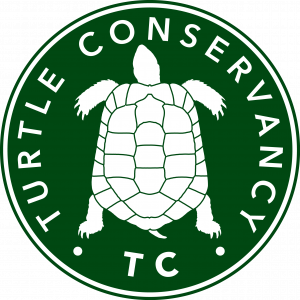Recently Extinct Turtles of the World
Turtles and Tortoises of the World During the Rise and Global Spread of Humanity:
First Checklist and Review of Extinct Pleistocene and Holocene Chelonians
Turtle Extinctions Working Group*
*Authorship of this article is by this joint Working Group of the IUCN SSC Tortoise and Freshwater Turtle Specialist Group
and specialists in Chelonian Paleontology, which for the purposes of this document consisted of the following contributors:
Anders G.J. Rhodin1, Scott Thomson2, Georgios L. Georgalis3,4,
Hans-Volker Karl5, Igor G. Danilov6, Akio Takahashi7,
Marcelo S. de la Fuente8, Jason R. Bourque9, Massimo Delfino4,10, Roger Bour11,
John B. Iverson12, H. Bradley Shaffer13, and Peter Paul van Dijk14
1Chairman Emeritus, IUCN SSC Tortoise and Freshwater Turtle Specialist Group,
Chelonian Research Foundation, 168 Goodrich St., Lunenburg, Massachusetts 01462 USA [[email protected]];
2Museu de Zoologia da Universidade de São Paulo, Divisão de Vertebrados (Herpetologia),
Ipiranga, 04263-000 São Paulo, Brazil [[email protected]];
3Department of Geosciences, University of Fribourg/Freiburg, Chemin du Musée 6, 1700 Fribourg, Switzerland [[email protected]];
4Dipartimento di Scienze della Terra, Università di Torino, Via Valperga Caluso 35, 10125 Torino, Italy [[email protected]];
5Department of Prehistoric and Early Historic Archaeology, Friedrich-Schiller-University Jena,
Löbdergraben 24a, 07743 Jena, Germany [[email protected]];
6Department of Herpetology, Zoological Institute of the Russian Academy of Sciences,
Universitetskaya Emb. 1, St. Petersburg, 199034, Russia [[email protected]];
7Department of Zoology, Faculty of Science, Okayama University of Science,
Ridaicho 1-1, Kitaku, Okayama 700-0005, Japan [[email protected]];
8Departamento de Paleontología, Museo de Historia Natural de San Rafael,
Parque Mariano Moreno s/n, (5600) San Rafael, Provincia de Mendoza, Argentina [[email protected]];
9Division of Vertebrate Paleontology, Florida Museum of Natural History,
Dickinson Hall, University of Florida, 1659 Museum Rd., Gainesville, Florida 32611 USA [[email protected]];
10Institut Català de Paleontologia Miquel Crusafont, Universitat Autònoma de Barcelona,
Edifici ICP, Campus de la UAB s/n, 08193 Cerdanyola del Vallès, Barcelona, Spain;
11Laboratoire des Reptiles et Amphibiens, Muséum National d’Histoire Naturelle, Paris, France [[email protected]];
12Department of Biology, Earlham College, Richmond, Indiana 47374 USA [[email protected]];
13Department of Ecology and Evolutionary Biology and Institute of the Environment and Sustainability,
University of California, Los Angeles, California 90095 USA [[email protected]];
14Co-Chair, IUCN SSC Tortoise and Freshwater Turtle Specialist Group,
Conservation International, 2011 Crystal Drive, Suite 500, Arlington, Virginia 22202 USA [[email protected]]
Abstract. – We provide a first checklist and review of all recognized taxa of the world’s extinct Pleistocene and Holocene (Quaternary) turtles and tortoises that existed during the early rise and global expansion of humanity, and most likely went extinct through a combination of earlier hominin (e.g., Homo erectus, H. neanderthalensis) and later human (H. sapiens) exploitation, as well as being affected by concurrent global or regional climatic and habitat changes. This checklist complements the broader listing of all modern and extant turtles and tortoises by the Turtle Taxonomy Working Group (2014). We provide a comprehensive listing of taxonomy, names, synonymies, and stratigraphic distribution of all chelonian taxa that have gone extinct from approximately the boundary between the Late Pliocene and Early Pleistocene, ca. 2.6 million years ago, up through 1500 AD, at the beginning of modern times. We also provide details on modern turtle and tortoise taxa that have gone extinct since 1500 AD. This checklist currently includes 100 fossil turtle and tortoise taxa, including 84 named and apparently distinct species, and 16 additional taxa that appear to represent additional valid species, but are only identified to genus or family. Modern extinct turtles and tortoises include 8 species, 3 subspecies, and 1 unnamed taxon, for 12 taxa. Of the extinct fossil taxa, terrestrial tortoises of the family Testudinidae (including many large-bodied island forms) are the most numerous, with 60 taxa. When the numbers for fossil tortoises are combined with the 61 modern (living and extinct) species of tortoises, of the 121 tortoise species that have existed at some point since the beginning of the Pleistocene, 69 (57.0%) have gone extinct. This likely reflects the high vulnerability of these large and slow terrestrial (often insular) species primarily to human exploitation. The other large-bodied terrestrial turtles, the giant horned turtles of the family Meiolaniidae, with 7 taxa (also often insular), all went extinct by the Late Holocene while also exploited by humans. The total global diversity of turtles and tortoises that has existed during the history of hominin utilization of chelonians, and that are currently recognized as distinct and included on our two checklists, consists of 336 modern species and 100 extinct Pleistocene and Holocene taxa, for a total of 436 chelonian species. Of these, 109 species (25.0%) and 112 total taxa are estimated to have gone extinct since the beginning of the Pleistocene. The chelonian diversity and its patterns of extinctions during the Quaternary inform our understanding of the impacts of the history of human exploitation of turtles and the effects of climate change, and their relevance to current and future patterns.
Key Words. – Reptilia, Testudines, turtle, tortoise, chelonian, taxonomy, distribution, extinction, fossils, paleontology, archaeology, humanity, hominin, exploitation, chelonophagy, megafauna, island refugia, climate change, Pliocene, Pleistocene, Holocene, Anthropocene, Quaternary
Citation:
Turtle Extinctions Working Group [Rhodin, A.G.J., Thomson, S., Georgalis, G., Karl, H.-V., Danilov, I.G., Takahashi, A., de la Fuente, M.S., Bourque, J.R., Delfino, M., Bour, R., Iverson, J.B., Shaffer, H.B., and van Dijk, P.P.]. 2015. Turtles and tortoises of the world during the rise and global spread of humanity: first checklist and review of extinct Pleistocene and Holocene chelonians. In: Rhodin, A.G.J., Pritchard, P.C.H., van Dijk, P.P., Saumure, R.A., Buhlmann, K.A., Iverson, J.B., and Mittermeier, R.A. (Eds.). Conservation Biology of Freshwater Turtles and Tortoises: A Compilation Project of the IUCN/SSC Tortoise and Freshwater Turtle Specialist Group. Chelonian Research Monographs 5(8):000e.1–66.
(Acrobat Version 6.0 Required)








